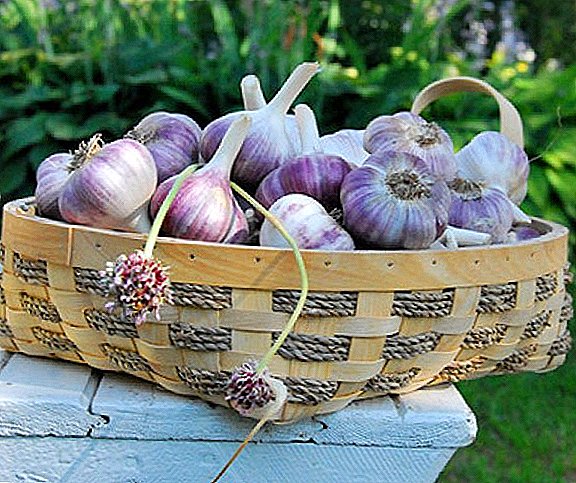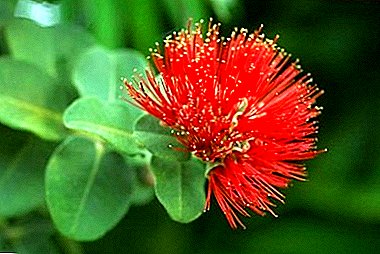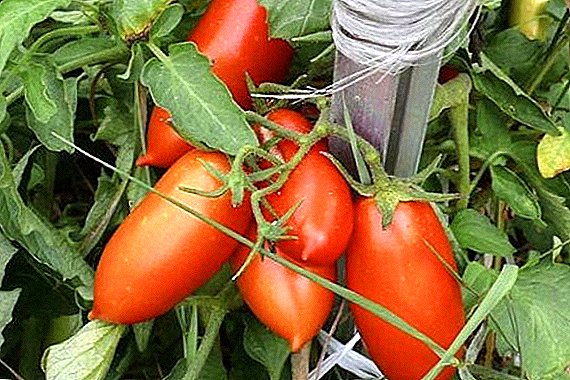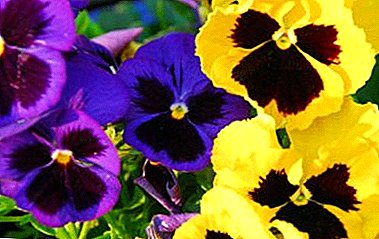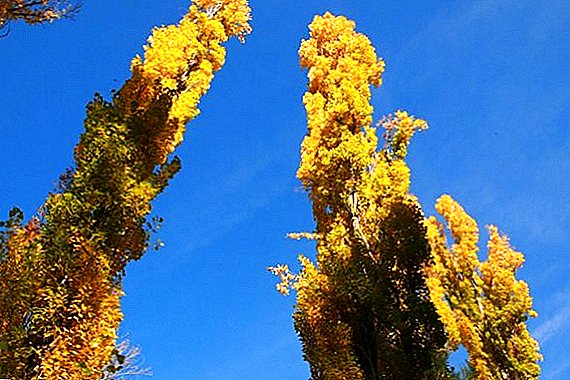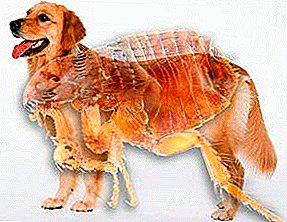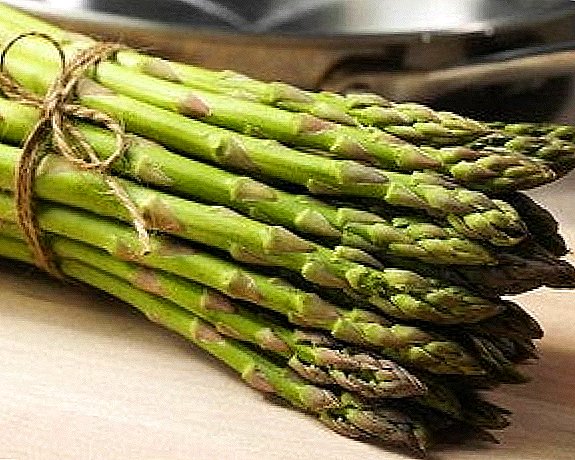
This plant is often considered a delicacy, not even suspecting that it can be quite successfully grown on its own beds.
The benefits and enjoyment of the excellent taste that asparagus has cannot be compared with anything else.
In addition, the first harvests of real asparagus are quite realistic from the end of April, since its youngest shoots are used as food.
However, by true asparagus, many people understand the more common asparagus bean in our country, which is in fact ordinary capsicum, only eaten as well as asparagus, in the immature form.
To be useful to fans and asparagus and asparagus beans, tell about the peculiarities of growing and that, and another plant.
We grow asparagus in our own garden: what you need to know and where to start?
Preparing for planting asparagus: choose the soil and process it
Before you start planting asparagus, you need to familiarize yourself with the features of this plant. In fact, it is rather unusual for us, and this "unusual" is as follows:

- Belongs to the most unpretentious plants that easily tolerate cold temperatures. In the adult form has some similarities with the fern, in size reaches a height of 1.5 meters.
- The root system of asparagus left for winter in the open field is not damaged by frost, even at -30ºС, but spring frost is dangerous for its green shoots (which are eaten). Damage appears on plants even at -5 ºC.
- After winter, plants start to wake up only when the air temperature starts to rise steadily to +10 ºС. By the middle of summer fruits appear on the trunks and leaves of asparagus.
- Asparagus is grown outside the crop rotation, since it can grow in one place for about 15 years. Ideally suited little elevated places that are not blown by drafts and cold winds. It is better to choose a small hill with a slope to the south.
- Despite the unpretentiousness to weather conditions, for growth the plant needs to provide a fertile land. In particular, sandy sands are the best suited for their structure.
- As a place for planting asparagus, experienced gardeners and gardeners are advised to take places that were previously engaged in greenhouses or breeding grounds. Also, the soil cleared from the landfill will be rich for asparagus, since a very powerful layer of humus usually accumulates on such places.
If we have figured out what type of soil is preferable for asparagus, then all that remains is to start preparing it directly.
In particular, the necessary area is still carefully and deeply dug up in the fall. It is fertilized by means of rotted manure or non-acidic peat manure. You can also use superphosphate, spending about 50-60 grams per square meter.
In the springtime, the site will need harrowing, as well as additional feeding. In particular, about 20 grams of ammonium nitrate and from 20 to 30 grams of potassium chloride will need to be added to an area of 1m2.
The latter can also be replaced with wood ash (about 60 grams in the same area). Also, it is important to control that no weeds appear on the plot.
We are engaged in sowing asparagus seeds: how to ensure reliable seedlings?

Before sowing, the seeds must be processed, otherwise seedlings may not appear.
However, you should draw your attention to the fact that asparagus can be quite successfully grown through rhizomes, however, it is much harder to get them.
Thus, it is best to grow your own seedlings, which in the future can be constantly multiplied.
Seeds same for germination oblige fabric and for an hour sent to a solution of potassium permanganateheated to 40ºС.
After washing the seeds with clean water, they are left in the wet tissue for 5-6 days.
If you keep them at a temperature of 20 to 28 ºС and constantly moisten the cloth in which the seeds are wrapped, they will soon germinate and be ready for planting in open ground.
When and according to what scheme sprouted asparagus seeds are planted?
It is best to plant asparagus seeds in mid-April. It is best to sow them in greenhouses or under film, not forgetting the susceptibility of seedlings to low temperatures.
The ideal scheme will be 6 to 6 centimeters, which will allow not only the plants to fully develop, but also to care for them. Seeds are embedded at a depth of 2 centimeters. Also, to obtain simultaneous seedlings from seeds, the soil after sowing should be compacted using a board.
Features and rules for the care of asparagus seedlings
- Seedlings of asparagus should be constantly watered, and the soil in which it grows, loosen.
- Already after the first weeding of the plants, they are fed with a mullein (1 part to 6 parts of water) or ammonium nitrate (1 m2 of about 20 grams).
- Watering should not be too abundant, but it is necessary to keep the soil in a constantly slightly moist state.
- Since asparagus can grow in a seedling form until the next spring, throughout the entire summer period it should be fed as described above several more times. As a fertilizer, about 40 grams of superphosphate can be added to a bucket of the necessary top dressing.
- To protect seedlings from winter frost, they are harbored in the fall with rotted manure or compost from straw.
We start planting asparagus seedlings in open ground

Among the seedlings obtained, most plants may not be entirely suitable for further cultivation.
Therefore, picking them out from the hotbed in the spring (for this purpose it is best to use forks) it is worthwhile to inspect each plant well and choose the strongest ones.
The main criteria for good seedlings;
- Healthy appearance.
- The presence of 5-7 well developed shoots.
- Developed root system.
Terms that are best for planting asparagus seedlings in open ground
Planting asparagus seedlings is usually carried out in the earliest spring. Of course, that by this time the soil should already have time to fully thaw and warm up a little.
However, many people plant asparagus seedlings in open ground immediately in the year of sowing. In this case, this process takes place around mid-June to allow the plants to fully adapt to a new growth site before the onset of the first cold weather. In this case, in the second year in early spring, asparagus rhizomes will be transplanted, and not the seedlings themselves.
The scheme of planting seedlings in open ground and fertilizing the soil for better plant growth

Rows with asparagus should be made very wide - at least 1 meter. At the same time, the width of the furrow for planting itself should be 30 centimeters wide, and 25 centimeters in depth.
Naturally, it is impossible to bury the seedlings so deeply, simply its tops should remain 15-16 centimeters below the soil surface. However, the bottom of the furrows need lay fertilizer, preliminarily loosening the soil at the bottom and spreading a mixture of humus, ash and superphosphate with a mound.
The seedlings are planted on this mound, with the roots spread on its surface. Planted plants to a depth of no more than 6 centimeters, between the plants need to leave a space of 40 centimeters. Seedlings fall asleep in the furrows with the help of humus, immediately after this watering.
About a month after planting, it is imperative to check how well the seedlings managed to take root in the new place. If dead plants are found, they must be removed and replaced with new ones.
Council gardener: the area between the furrows can be used rationally, taking it under planting celery or asparagus beans on the pods. At the same time, the beans will have a very positive effect on the condition of the soil, enriching it with nitragin.
The basics of care for asparagus planted in open ground
- All aspects of the care, which were described above for asparagus seedlings, are also used in the same proportions for the care of maturing plants.
- After, when the asparagus sprouts rise above the surface of the beds from their furrows, the soil can be fed with saltpeter, using about 30 grams of fertilizer per 1m2.
- Also, this time it is possible to gradually level the bed, filling the grooves using the soil from the row spacing. Only then can the space between the asparagus be harvested be harvested.
- In autumn, all the stalks of the plant are cut and burned. The plot for the winter is covered with humus. In order not to lose rows with asparagus, colas are placed at their ends, and in the spring crests from the soil between rows are drawn onto them.
Asparagus diseases, as well as ways to protect plants from them

Although overall asparagus resistance to various pests is regarded as high, in very rare cases it can be affected by fungus. Moreover, this disease is quite capable of very hard to hit plants in just 2 days.
Thus, it is possible to lose absolutely all plantations. You can determine the appearance of the fungus by dying off of the root collar, after which all the branches dry out and fall off.
A good means of combating this disease is the chemical drug "Fundazol." However, for the struggle to be effective, it must be applied very quickly and strictly following the instructions of the instruction.
Also, the greatest danger to asparagus is provided by pests that look like little black bugs. These are asparagus leaf beetles, the larvae of which are able to completely destroy all the leaves and cause the whole plant to dry.
You can fight these pests using insecticides, which include Aktelik and Fufanon. Using them will also familiarize yourself with the instructions that will help to conduct pest control quickly, without repeated treatments.
We start to harvest asparagus, as well as with the peculiarities of its storage

After the appearance of the first spring shoots and before the start of the asparagus harvest, at least 3-4 weeks should pass. Thus, shoots can be cut off in May. Moreover, the harvesting begins immediately from the moment when the heads of the plant appear above the ridge.
Each shoot is excavated for this purpose from the soil, and at the very base it is trimmed with a very sharp knife. At the same time, it is very important not to damage the tops of other shoots of asparagus.
It is important to return the broken soil into place and compact it. You can harvest every 1-2 days, while even in the first year you can continue it for about 20 days. When you reach a more adult age, fresh asparagus from the beds can be obtained about 45 days.
For storage, the asparagus is sent to a warm room, re-sorted, cut the tips and placed in baskets, trying not to cause damage. Further, storage assumes that the pods are kept in a refrigerator at a temperature from 0 to 2 ° C. In this form, it will retain not only its former fresh look, but also good taste.
It is also interesting to read about eggplant varieties for Siberia
Asparag beans in your garden: learn to grow good crops and start harvesting them in time
Preparing the soil for planting beans on a green pod
The soil should ideally be loose and non-acidic. Fertility also plays an important role. Light loam will do, although medium ones can be used. Also, it is important that groundwater level was low.
Due to the fact that this plant often suffers from anthracosis, every year it should be planted in a new place, it is best to choose the beds after the root crops. Also, to prepare the soil, you need:
- Pick up a well-lit place and remove weeds from it.
- Ever since autumn, dig up the bed and fertilize it with superphosphate and potassium chloride.
- In the spring to make potash fertilizers.
Features of sowing seeds of asparagus beans: studying technology

Sowing does not begin until June, because the seeds germinate only at very high temperatures - from + 20ºС. This also eliminates the likelihood of spring frosts. Those seeds that were previously soaked and germinated will be more likely and reliable, although it is not necessary to carry out such measures for asparagus.
Asparagus bean seeds are sown directly in open ground, without prior cultivation of seedlings. Seeds are embedded in pits of about 3 centimeters.
The planting scheme should include approximately 8 centimeters between the plants planted in the same row, and row spacings of 30 centimeters. However, it should not be forgotten that there are varieties among the string beans that are very intensively woven, therefore between such plants you need to leave a space of 35 centimeters, and also plant two seeds in one hole. The beds after sowing are covered with humus.
Appear after 2 weeks shoots thinned, leaving the strongest plants. Very important during this period provide plants with good wateringthat will contribute to the growth of stronger plants and the formation of succulent pods.
Asparag beans and the basics of caring for it throughout the growing season
After the emergence of seedlings, green asparagus must not only provide the necessary quantities of moisture, but also constantly loosen the soil, removing weeds, and also make fertilizers to feed the plants and stimulate their growth. In particular, nutrient solutions with fertilizers are introduced into the soil with beans at the time of bud formation and during its flowering.
Fertilizers are applied to furrows specially made for this parallel to the rows of plants. After this, the furrows are covered with soil.
In order to strengthen the root system of the asparagus bean, its bushes are tucking away already at that period of growth, when the plants reach a height of 10 centimeters. In wobbling varieties of this plant, it is very important to peg the tip when the plant is already 2 meters high.
This is done in order to stop growing and redirect all the forces of the plant to the formation of pods. Also, it is very important not to forget about the support for this type of asparagus beans.
Terms harvest harvests asparagus beans: how not to be late and get juicy pods?

The first harvest, that is, the collection of green pods for their further use in food, is carried out depending on the ripening terms of the variety itself and the time of its planting.
Thus, the maturity of early varieties of pods occurs 2 months after the first shoots emerged from the seeds, and in later ones this period is delayed by another half month.
The pods are harvested by hand after 8 days from the moment the beans are tied into them. If a pods cut regularly, the plant will tie new ones. In one season, it is often possible to harvest up to 5 harvests.
Used such beans in fresh form for cooking, canning and freezing. Fresh is stored for a very short period of time.


